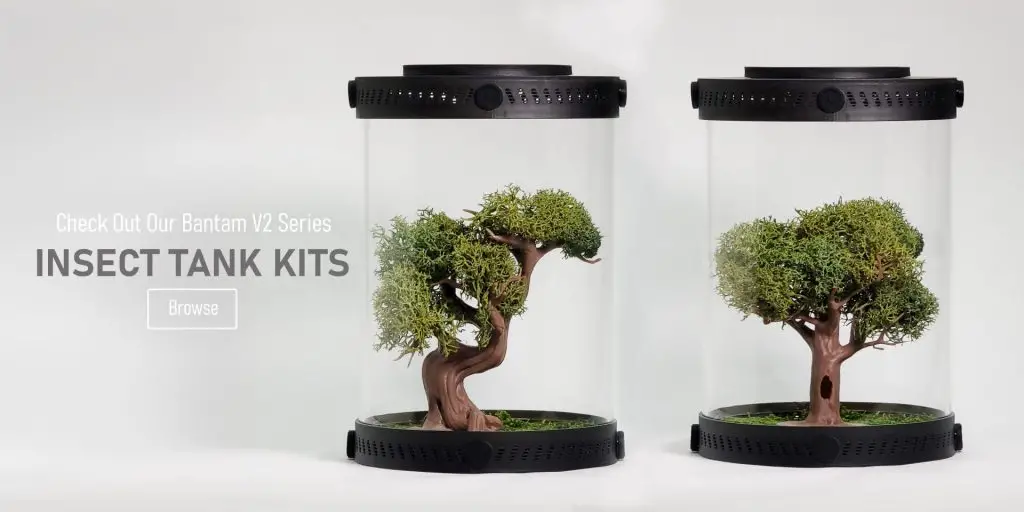Leaf bugs are unusual pets to consider keeping in a terrarium and if you aren’t careful they will eat out all of your luscious vivarium plants.
This ultimate leaf bug food guide will provide you with all the information you need to create your leaf-lover food so that you can still enjoy it in a controlled habitat.
With this guide, you will learn what leaf bugs eat, when to feed them, as well as a quick leaf bug food recipe, and common mistakes to avoid.
Table Of Contents:
ToggleWhat Do Leaf Bugs Eat?
Leaf bugs are known to feed on various plants, including shrubs, trees, and flowers.
They usually feed on the leaves of these plants but have also been known to feed on the sap and fruit produced by these plants.
These bugs will also typically feed on plants that are high in nitrogen, such as clover and alfalfa.
They are also known to feed on other insects, such as aphids and caterpillars, as well as other small invertebrates.
Leaf bugs will occasionally even feed on nectar and pollen from flowers.
Create the perfect home for your stick insects with our Customizable Mantis Enclosure Kits, designed to meet all their habitat needs.
Buy Leaf Bug Food
When it comes to buying Leaf Bug food, there are several options available.
You can find commercially available food typically sold for fishkeeping at pet stores or online.
Fish food usually consists of a mix of dried fruits, vegetables, and insects.
It is important to check the ingredients list to make sure that the food is nutritious and free from preservatives or other additives.
Additionally, you should be aware of the expiration date of the product and make sure to replace it regularly.
When To Feed Leaf Bugs
It is important to understand when to feed Leaf Bugs to ensure they are getting the nourishment they need.
Ideally, you should feed Leaf Bugs once or twice a day, using a small amount of food each time.
It is best to feed them in the morning and evening when they are most active.
Make sure to monitor the amount of food you are feeding them as well.
Additionally, it is essential to provide fresh food for the Leaf Bugs every day, as old food can become moldy and cause health issues.
Common Mistakes
One of the most common mistakes people make when feeding leaf bugs is not providing them with a balanced diet.
Leaf bugs need a variety of different types of food, so it’s important to make sure you are providing them with a range of proteins, carbohydrates, and other nutrients.
Another mistake people make is not providing the leaf bugs with enough food.
Leaf bugs can eat up to three times their body weight in food daily, so make sure to provide enough for them to eat.
They would typically feed on a variety of different plants, flowers, and fruits, so providing them with a variety of food sources will help ensure they get the nutrients they need.
Finally, it’s important to avoid using pesticides or insecticides when providing food for leaf bugs.
These chemicals can be toxic to the leaf bugs and can cause long-term health issues.
If you are growing your plants, make sure to use natural pest control methods instead.
Conclusion
Making your leaf bug food is a great way to save money and provide your leaf bugs with a nutritious meal.
After reading this guide, you should have a better understanding of what leaf bugs eat when to feed the leaf bugs, and common mistakes to avoid.
With the information in this guide, you can now easily make your leaf bug food and keep your leaf bugs happy and healthy!
Frequently Asked Questions
Leaf bugs primarily feed on leaves, although some species may also consume flowers or other plant parts.
While leaf bugs are primarily herbivorous and mainly feed on leaves, some species may occasionally consume fruit or other plant parts as well.
The length of time a leaf bug can survive without food varies depending on factors such as the species, age, and health of the individual bug.
However, as a general rule, adult leaf bugs can usually survive for several weeks without food.
Leaf bugs are primarily attracted to plants, particularly those with broad leaves or a lot of foliage.
They are also attracted to sources of light at night, which can sometimes result in them being found indoors.



